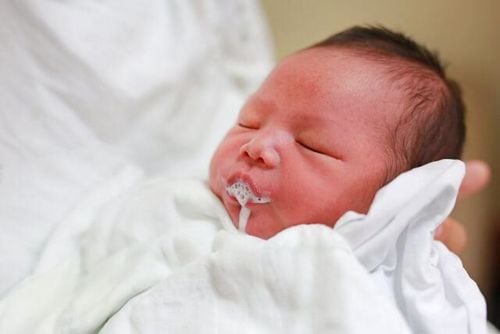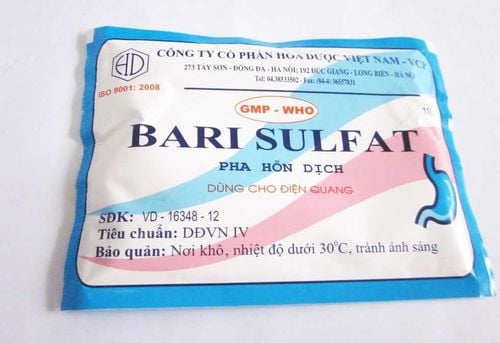This is an automatically translated article.
The article was professionally consulted by MSc Vu Van Quan - Department of General Surgery & Anesthesia, Vinmec Hai Phong International General Hospital. The doctor has more than 10 years of experience working in the field of General Gastroenterology.Hypertrophic pyloric stenosis is a common condition between infancy and breastfeeding. The main method of treatment is surgery. In which, laparoscopic surgery to treat pyloric stenosis has many advantages and is effective for patients.
1. What is hypertrophic pyloric stenosis?
Hypertrophic pyloric stenosis has gross anatomical lesions in the form of an oval-shaped pyloric myoma, about 2cm across, 3-4cm long. Internal analysis showed that the serosa layer was still normal, the muscle layer, mainly the sphincter, was enlarged, narrowing the lumen of the pylorus. The disease is clinically manifested by vomiting syndrome due to pyloric lumen stenosis by excessive hypertrophy of the muscular layer of the pyloric region. Hypertrophic pyloric stenosis, if diagnosed late and treated incorrectly, will lead to dehydration, rapid weight loss, severe exhaustion and difficulty in recovery. The progress of laparoscopic surgery and anesthesia resuscitation techniques in recent times has brought about very positive results for pediatric patients. The cause of pyloric stenosis is still not really clear. Hypertrophic pyloric stenosis is the most common cause of gastric outlet obstruction in neonates and infants. Diagnosis of pyloric stenosis is mainly based on abdominal ultrasound features.
2. Clinical symptoms
The postpartum period has a completely normal period, usually about 2-4 weeks after birth, after which clinical symptoms appear.Functional symptoms include:
Vomiting: This is a very specific sign and clinically suggested by the following features: Starting with regurgitation and then later violent vomiting. The number of times of vomiting increased gradually, at first vomiting only a few times a day, then one time after each feeding. Vomiting occurs slowly after feeding. Vomiting is full of white fluid (ingested milk), never with the presence of bile (yellow or green). After vomiting the child becomes hungry and demands immediate feeding. Constipation: The stool is small and has a green color like meconium. Little urine. Systemic symptoms include:
Patient has signs of severe dehydration, weight loss compared to birth, sunken eyes, skin pinching that disappears slowly, dehydration
Physical symptoms:
Abdomen is soft, flattened, heart concave boat A small, round lump can be palpated above the navel. This is a very important sign for clinical diagnosis.

3. Laparoscopic surgery to treat hypertrophic pyloric stenosis
Surgical treatment is indicated in all cases diagnosed with hypertrophic pyloric stenosis.Contraindications for children: Hemodynamic disorders, electrolyte disorders, other contraindications for endoscopic surgery. Performer: Gastrointestinal surgeon with experience in laparoscopic surgery, anesthesiologist and experienced instrumentation. Procedure: The patient is placed supine at the end of the operating table, the surgeon stands at the child's feet, the endoscope screen is opposite. The patient was anesthetized, and gastric juice was aspirated. Using a normal knife or an electric knife, make an incision about 5mm above the navel about 5mm into the peritoneal cavity. Inject CO2 into the abdomen with low pressure from 6-8 cmH2O. Make two small incisions in the right and left upper quadrants of the abdomen. Place the laparoscopic instrument into the upper incision. Use a grasper to hold the duodenum at the pylorus junction and cut along the pylorus with a knife. In the absence of a pyloric knife, a 3mm unipolar sphincter can be used to cut the pylorus, using a small burn rate. Use endoscopic pyloric balloon to completely separate the pyloric myoma until the mucosa is bulging. The greater omentum may be placed over the muscle opening to stop bleeding. Gastric bypass to check for perforation. Withdraw the instrument from the abdomen. Closure of the umbilicus and suture of the skin Complications: Incisional infection. Incisional hernia: close the incision. Recurrence due to incomplete dissection, the child may still have symptoms such as vomiting after surgery.
Please dial HOTLINE for more information or register for an appointment HERE. Download MyVinmec app to make appointments faster and to manage your bookings easily.














